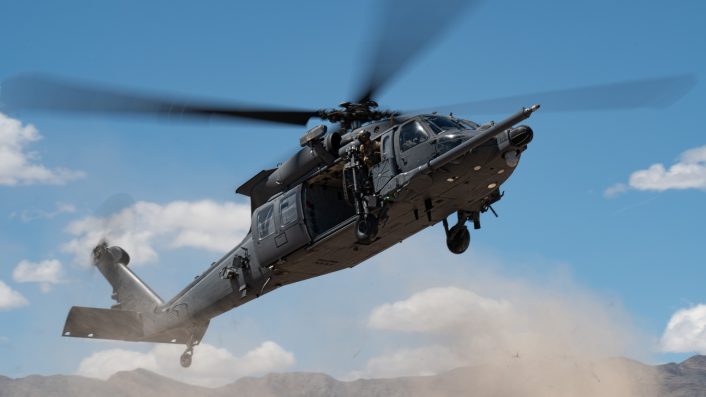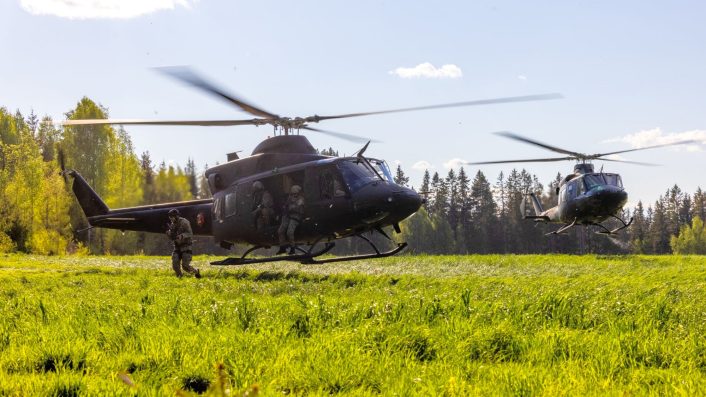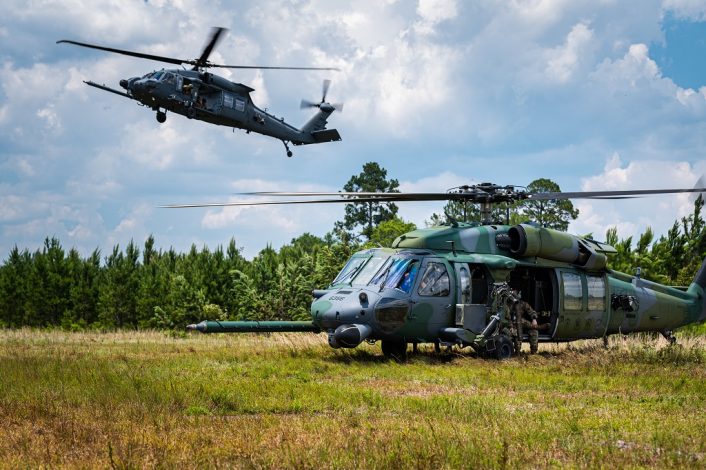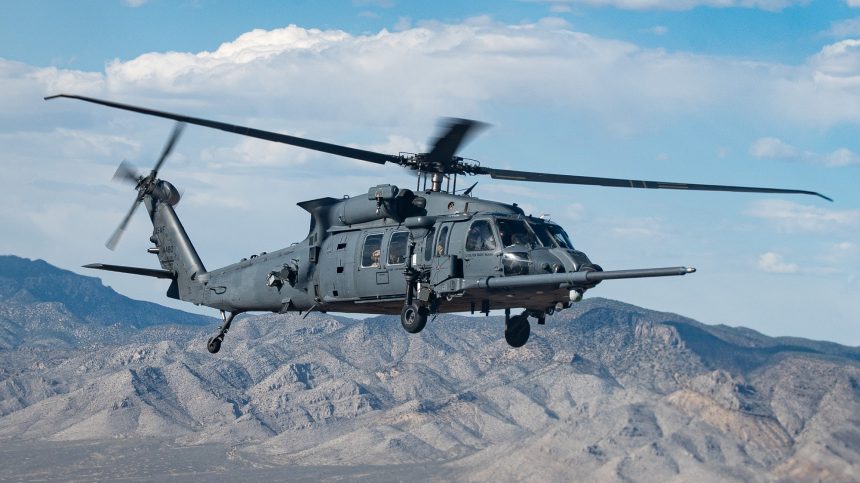The U.S. government has approved the possible Foreign Military Sale to Norway of nine HH-60W Jolly Green II Combat Rescue Helicopters.
The U.S. State Department has approved the Foreign Military Sale (FMS) to Norway of a package which includes HH-60W Jolly Green II Combat Rescue Helicopters and related equipment for an estimated cost of $2.6 billion. The development was disclosed on Jul. 11, 2025, as the DSCA (Defense Security Cooperation Agency) notified Congress.
The Foreign Military Sale
Norway requested to procure from Sikorsky up to nine HH-60W helicopters and 22 T-700-GE-401 turboshaft engines, of which four would be spares since the HH-60W is a twin-engine helicopter. Additionally, the request includes Embedded Global Positioning System/Inertial Navigation Systems (GPS/INS) (EGI), AN/APR-52 Radar Warning Receivers (RWR), AN/AAR-57 Common Missile Warning Systems (CMWS), AN/ALE-47 Airborne Countermeasures Dispenser Systems and GAU-21 aircraft machine guns.
The request also extends to non-MDE (non-Major Defense Equipment) items, which include the standard plethora of support systems, logistics, documentation and training. Following the notification to Congress, the procurement process will now move to the negotiation phase to define a contract.
Should the sale be confirmed with the award of a contract, this would be the first export sale of the HH-60W. The helicopter is currently only used by the U.S. Air Force, which is in the process of replacing the aging HH-60G Pave Hawk.
Also, this would not be the only Sikorsky product in Norway, as the country is also set to receive six MH-60R Seahawk helicopters to replace the NH-90 retired in 2022. The HH-60W and MH-60R, while being very different because of their missions, still retain a certain degree of commonality, which would benefit the logistics.

Bell 412 replacement
The DSCA appears to hint at the HH-60 possibly being selected to replace the Royal Norwegian Air Force’s Bell 412 helicopters assigned to the 339 Special Operations Aviation Squadron (339 skvadron), as also noted by Aviation Week. “The proposed sale will improve Norway’s capability to meet current and future threats by increasing its airborne combat and special operations capabilities,” mentions the DSCA notice.
In fact, the RNoAF operates a fleet of 18 Bell 412 helicopters for the special forces support mission. In 2024, Kongsberg Aviation Maintenance Services (KAMS) secured a contract with the Norwegian Defence Materiel Agency (NDMA) to upgrade the helicopters to ensure their readiness until the new fleet becomes operational.
The upgrades to the Bell 412 fleet are planned to be carried out in two phases. The first primarily addresses civilian communication and navigation solutions, while the second will address military communication solutions.
At the time, the type that would replace the Bell 412 was not mentioned. However, in 2023, it was disclosed that only nine helicopters would be upgraded, a number which coincides with the number of HH-60Ws being requested for the FMS. The 2024 contract’s press release did not mention the number of helicopters involved.

The HH-60W
The U.S. Air Force received the first two operational HH-60W Jolly Green II helicopters in 2020 at Moody Air Force Base, Georgia, beginning the transition from the HH-60G. The name Jolly Green II was chosen as a reference to the legendary tradition of the Vietnam-era HH-3E Jolly Green and HH-53 Super Jolly Green crews who pioneered the combat search and rescue mission.
Based on the UH-60M, the HH-60W includes a number of improvements over the HH-60G, with a focus on range and survivability. The Whiskey-model is in fact expected to operate in high-risk, contested environments while extending mission endurance and effectiveness.
One of the most critical enhancements is the HH-60W’s extended fuel capacity, nearly doubling that of its predecessor. The removal of internal auxiliary fuel tanks allows for more valuable cabin space, giving the crew and pararescuemen greater flexibility to work and provide in-air medical care. Range is particularly a problem in CSAR helicopters, where there might be a need to rescue pilots who have gone down deep in enemy territory.
Modifications to the HH-60W include a digital radar warning receiver; laser, missile, hostile fire warning; integrated chaff and flares; cabin and cockpit armor; externally mounted 7.62 mm and .50 caliber weapons; LINK 16 military tactical data link network; Situational Awareness Data Link; integrated cockpit and cabin displays; advanced communications; Automatic Dependent Surveillance-Broadcast; tactical moving map displays; upturned IR-masking exhausts; and efficient wide-chord rotor blades.

The HH-60W features a fully integrated glass cockpit with modernized mission systems, offering pilots enhanced real-time situational awareness in complex operational environments. The upgraded communication and data-sharing capabilities further improve coordination with joint and allied forces.
Another major improvement is its lethality. The HH-60W is armed with GAU-2/A 7.62mm miniguns and GAU-21 .50 caliber machine guns, providing increased defensive capabilities during rescue operations. Meanwhile, a redesigned cabin layout optimizes medical treatment and personnel recovery efforts, ensuring better patient care during casualty evacuations.
Just two years after the first delivery and three after the first flight, the HH-60W reached the IOC (Initial Operational Capability) in 2022. Just a couple of days before the IOC declaration, Moody AFB completed the first rescue mission in the Jolly Green II, and within a month launched the first-ever operational deployment of the HH-60W.
The first deployment abroad of the new helicopter was largely kept under wraps, without few info and media released. While in the Combined Joint Task Force-Horn of Africa area of responsibility, the HH-60W performed the first combat CASEVAC (CASualty EVACuation).
Aviano Air Base, Italy, was the last active duty location to operate the HH-60G model, and at the end of 2024 joined Moody AFB, Georgia, Davis Monthan AFB, Arizona, Nellis AFB, Kadena AB, Japan, Gabreski ANGB, New York, and Kirtlan AFB, New Mexico, which already operate the newer Jolly Green II.









